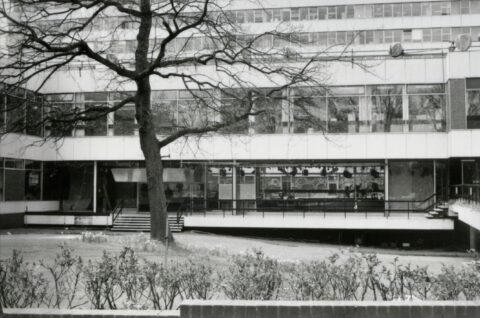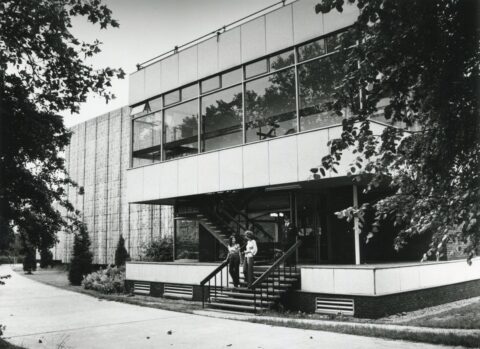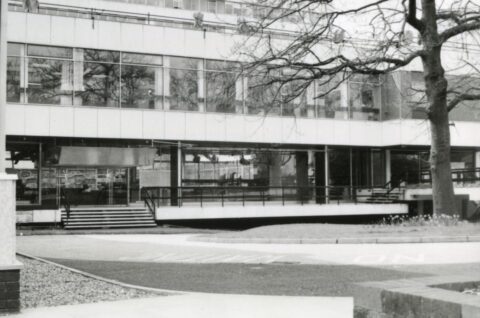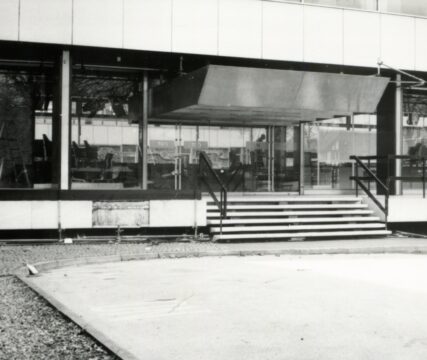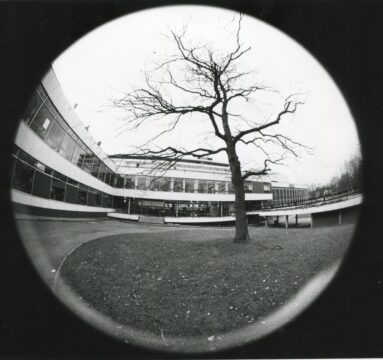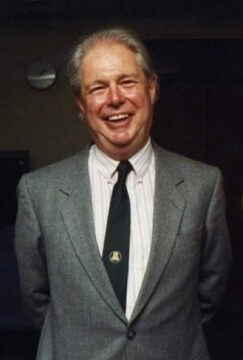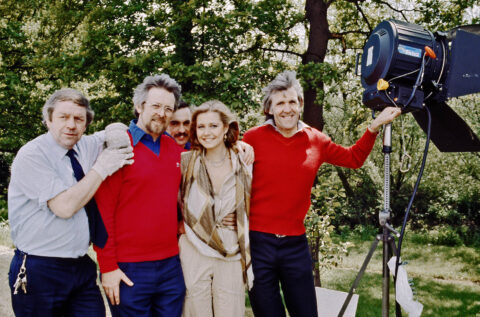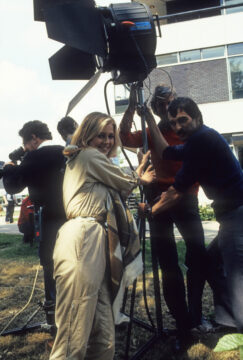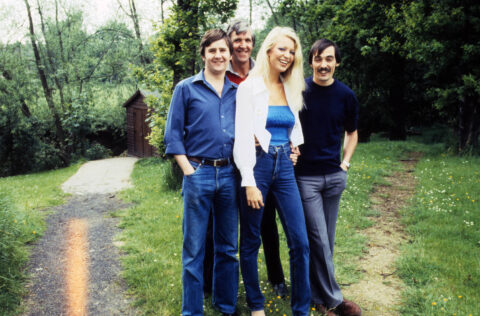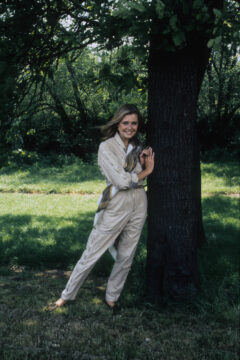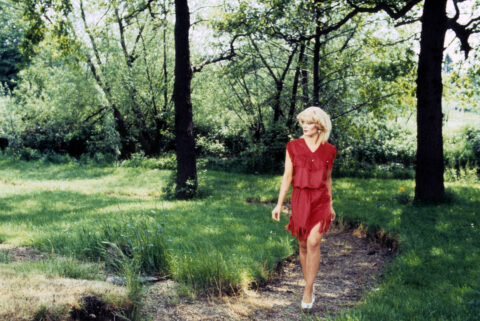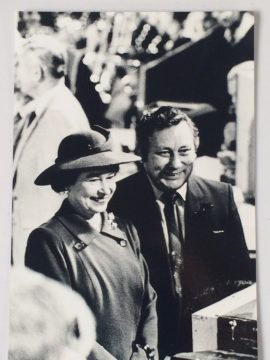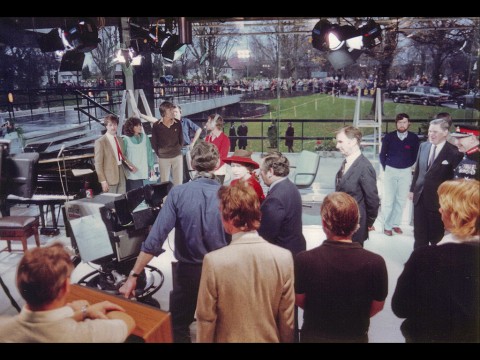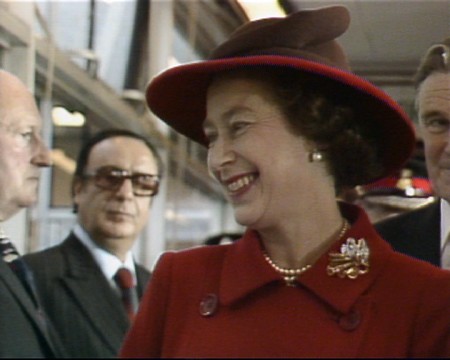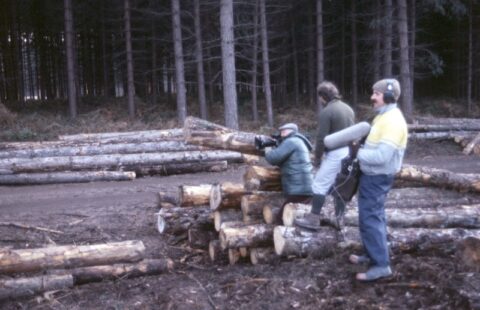
Photos by John Burkill, no reproduction without permission. John Williams on camera, Steve Saunderson assisting, Dave Baumber on sound.
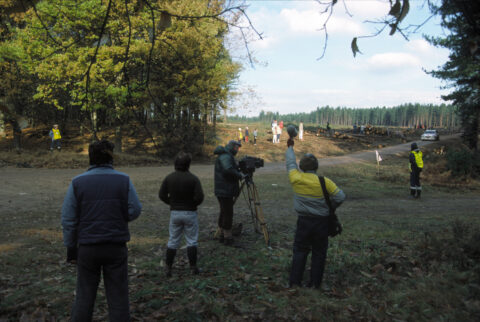
Producer Phil Franklin in foreground, John Williams on camera.
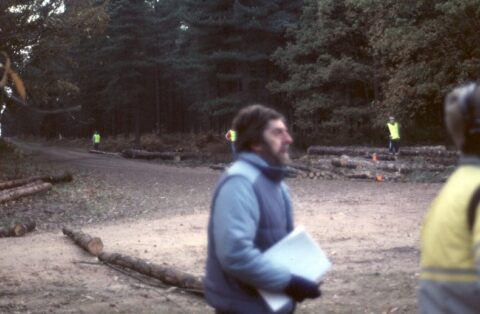
Phil Franklin



The pictures were taken on the RAC Rally in 1985 in Clipstone Forest, near Nottingham, on the morning of Tuesday the 26th of November. The cameraman is John Williams, the assistant is Steve Saunderson, the sound recordist is Dave Baumber and the producer, Phil Franklin.
The camera is almost certainly an Ikegami HL-79D and the recorder would probably have been a U-Matic in the bag over Dave’s shoulder.
The live transmissions, usually 10 to 15 minutes after 2300 hrs, were done by OB truck CM2, which was based at Rally Headquarters in the Albany Hotel in Nottingham, so Phil Franklin and VT editor, John Burkill were probably taking a short trip out to see a rally car in a forest. There was one mobile edit van, which was built for the rally, and it followed the event round the country and fed cut items back to CM2. The attached pictures of a machine rigged in CM2 would seem to confirm that the PSC format was U-Matic.
The Ikegami camera was developed for news gathering but was quickly adopted for handheld studio and OB work.
At the time, PSC style shooting was still done mainly on film, but this was the start of the transition to video. There were lots of experiments with different cameras, recorders and crews and this was one combination.
True PSC didn’t really take off until the Betacams and Digibeta came along, a bit later. They had the recorder built into the camera, making it much more like a film camera in terms of handling and the sound recordists made a sigh of relief.
The Ikegamis were used extensively at Pebble Mill for music acts and on jibs for drama. When the first one arrived, there was such excitement that it was used before the necessary adapter box to use it with TV36 cable was ready, outputting its pictures down a BNC cable. So the building’s sync pulses had to be synchronised with the camera (rather than the other way round) to avoid a picture roll every time it was cut to. This reached ridiculous heights, James French remembers, on a gardening item at the back of Pebble Mill for the live Pebble Mill at One. Not only was the building synced with the camera but the whole BBC network was synced to the building. There was a large cardboard sign attached to the Ikegami saying, “DO NOT SWITCH OFF!”
Thanks to John Burkill and James French for writing this post.
